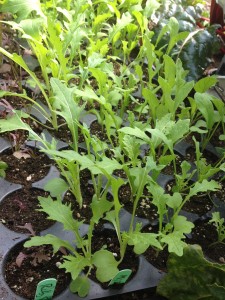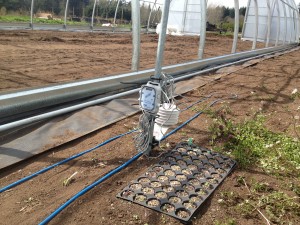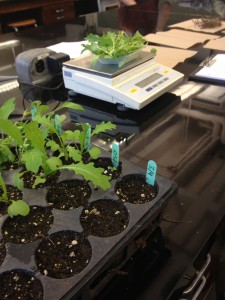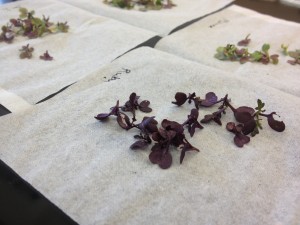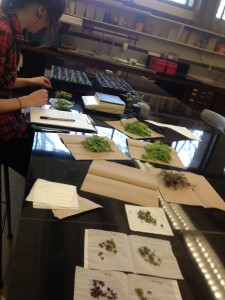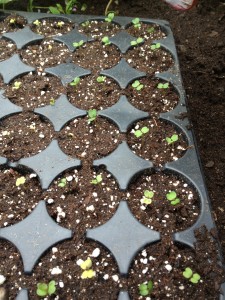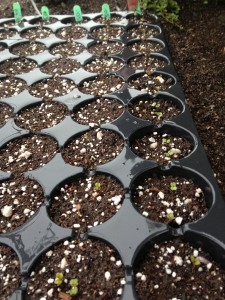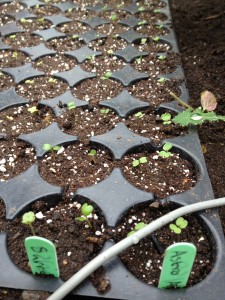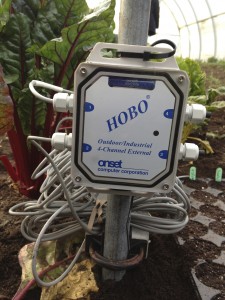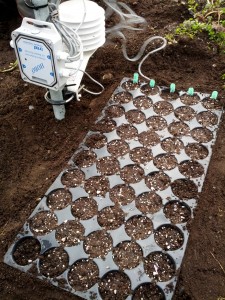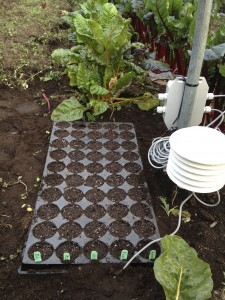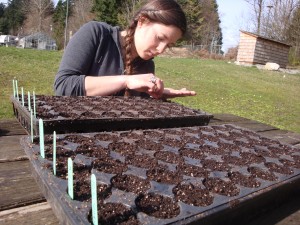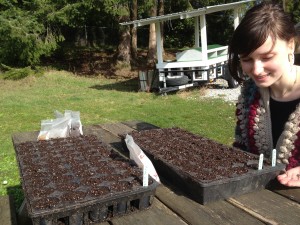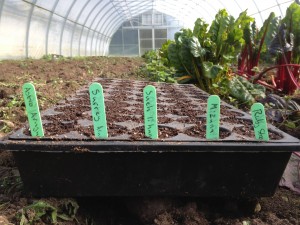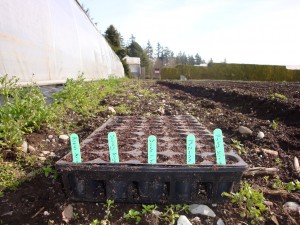Today was the last day of our season extension experiment at the UBC farm. We walked over to the farm to collect our crops, and all of the equipment we had used to complete the experiment.
We are really pleased with the crop we managed to get for under a month of growing time. The crops outside the greenhouse did not fare so well.
We were not aware that another hoop house was being built, or we would definitely have stuck our control plants in a less high-traffic area. However, a new hoop house will be an asset when the UBC farm goes into early baby arugula production!
Next, we got down to business. In this case, it was harvesting and weighing all of the arugula plants, in order to determine which cultivars would make good early season crop choices.
The plants that lived outside the hoop house were significantly smaller than the plants grown into the hoop house. This may be due in part to a miscommunication that led to the outdoor plants not getting watered as much as they should have, which, due to the warm dry weather over the past week and a half, may have put some undue stress on these little guys.
However, the indoor plants exceeded expectations!
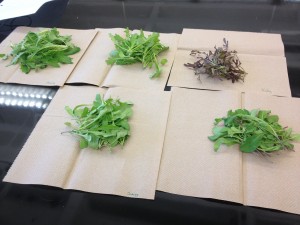
Hoop house grown cultivars. Clockwise from top left: Mizuna, Sueh Li Hung #2, Ruby Streaks, Astro arugula and Surrey arugula. Photo: Jenny
The whole team is continuing to analyze data and write up reports tonight, but we will be finishing the blog up in the next 16 or so hours. Tomorrow we present our research to the Agroecology 260 class!

